Clancy Tucker's Blog, page 252
July 22, 2015
23 July 2015 - ELIE WIESEL
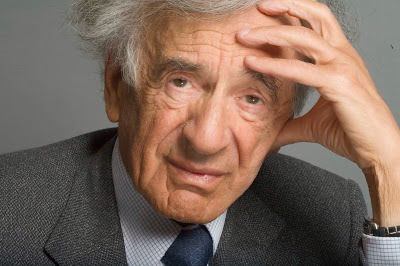
ELIE WIESEL
G'day folks,
Welcome to a very interesting and distinguished man who is a professor, author, humanitarian and Nobel Peace Prize winner.
Eliezer Wiesel is a Jewish American professor, writer and political activist. He was born in Sighet, Transylvania, Maramures, and Kingdom of Romania on 30th September 1928. In 1986, recognizing his struggle for peace, atonement and human dignity Norwegian Nobel Committee awarded him The Nobel Peace Prize. He is also famous for his arguably most powerful and renowned book in Holocaust literature, “Night” which is inspired by his personal experience as a prisoner in Auschwitz, Buna, and Buchenwald concentration camps.
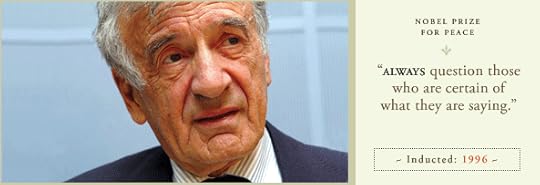
Since Elie Wiesel’s early age his father implanted in him a sense of humanism. Wiesel recalls that his father always taught him reasoning, his mother on the other hand represented faith. Growing up in a tiny village, his only affection was his family, religious study and community. His father always encouraged him to study the Modern Hebrew language and concentrate on his literature.
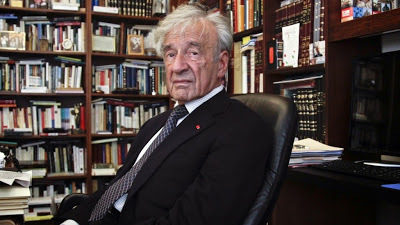
In 1944 Nazis invaded Sighet and destroyed the once secure childhood world of Wiesel. All the Jewish families were placed in concentration camps in Poland. Wiesel and his father were separated from his mother and sisters. They were forced to work almost to death and were shuffled between different camps mostly bare footed without food or proper clothing in driving snow. He lost his father on January 29th 1945 only months before the US army rescued him from the camps.
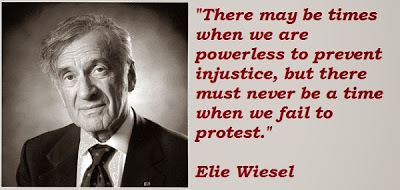
After the war Wiesel, reunited with his two surviving sisters, settled in France. There he taught Hebrew and mastered the French language. He also studied philosophy at the Sorbonne. He became professional journalist and wrote for newspapers both in France and Israel. In 1955, after ten years of utter silence about his experience in the camps and war in general, Wiesel met Francois Mauriac, a Nobel Prize awarded French author who later became his close friend for life. Mauriac is credited to have encouraged Wiesel to write about his experiences. “La Nuit” was the result of this persuasion which was later translated in English Language as “Night”. Wiesel had to struggle several years to find a publisher for his book and even when he did only few copies were sold initially. However, as yet, Night has been translated in more than 30 languages and by 1997 the book was selling over 300,000 copies annually in the US alone.
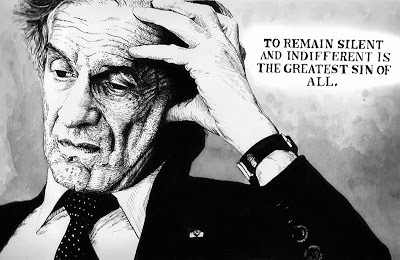
In 1956, Wiesel visited New York for his report on United Nations. During his visit, he was struck by a cab driver and was confined to a wheelchair for nearly a year. He applied for the renewal of his French permit which had allowed him to travel, upon denial of his request he successfully applied for US citizenship.
He started his career in US as feature writer for The Jewish Daily Forward. Wiesel used his international fame earned by his publications, to win justice for oppressed people and societies in different parts of the world. In 1978 he was appointed Chairman of the United States Holocaust Memorial Council by President Jimmy Carter.
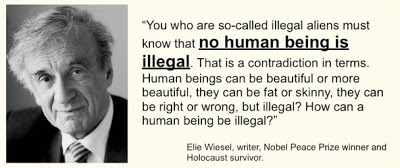
1985 brought him a Congressional Medal of Freedom, followed by the Nobel Prize of Peace in 1986. Wiesel has given may guest appearances and lectures in a number of universities all over the world. Despite his growing popularity as a humanitarian, Wiesel has not discarded his passion for fiction and continues working on his books and semi auto-biographical novels.

Clancy's comment: What can I say?
I'm ...

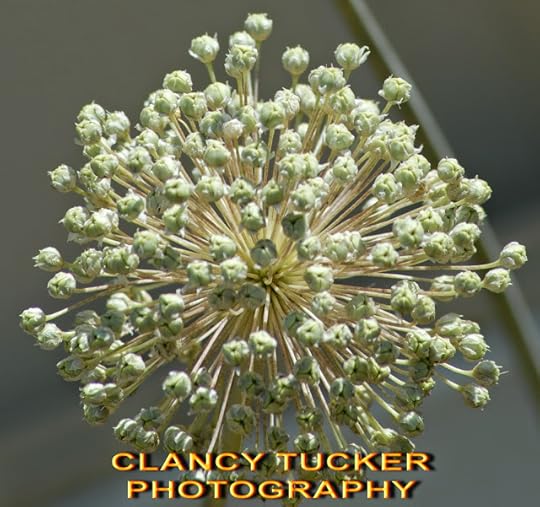
Published on July 22, 2015 04:56
July 21, 2015
22 July 2015 - THE BAJAU PEOPLE

THE BAJAU PEOPLE
G'day folks,
Welcome to the life of the Bajau people.
Malaysian photographer Ng Choo Kia, who is a member of SIPA Press, has created a beautiful showcase of the Bajau people of Malaysia. Traditionally the Bajau people are a nomadic, seafaring people and some continue this tradition today, which is why they are still commonly called "sea gypsies.”
Other Bajau people have chosen to abandon their traditional lifestyle and are located in Malaysia's eastern state, Sabah, on the island of Borneo. Although no longer nomadic, the sea still plays a major role in their lives, with their villages housed on the water, not far from land. The wooden houses are commonly on stilts overlooking the gorgeous, clear water.




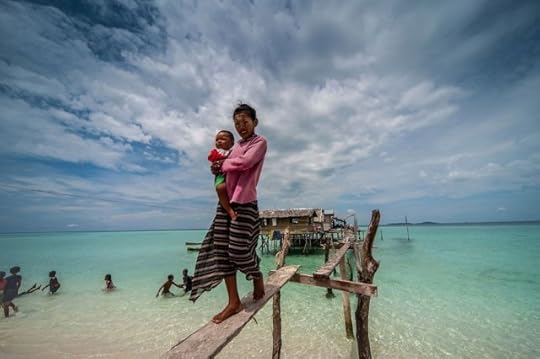



 Clancy's comment: Wow, what an interesting world, eh? I imagine that the kids are great swimmers.I'm ...
Clancy's comment: Wow, what an interesting world, eh? I imagine that the kids are great swimmers.I'm ...

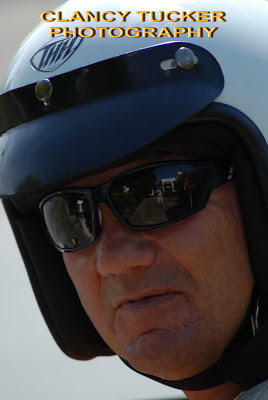
Published on July 21, 2015 05:10
July 20, 2015
21 July 2015 - TIPS FROM FAMOUS WRITERS
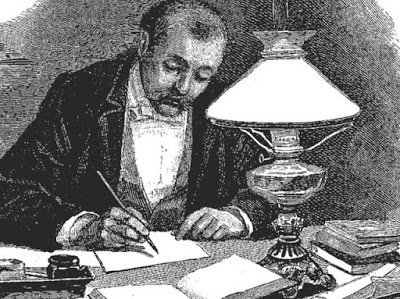
TIPS FROM FAMOUS WRITERS
G'day folks,
Time to present some more tips for you writers from folks who should know about this business.
David Hare
1 Write only when you have something to say.2 Never take advice from anyone with no investment in the outcome.3 Style is the art of getting yourself out of the way, not putting yourself in it.4 If nobody will put your play on, put it on yourself.5 Jokes are like hands and feet for a painter. They may not be what you want to end up doing but you have to master them in the meanwhile.6 Theatre primarily belongs to the young.7 No one has ever achieved consistency as a screenwriter.8 Never go to a TV personality festival masquerading as a literary festival.9 Never complain of being misunderstood. You can choose to be understood, or you can choose not to.10 The two most depressing words in the English language are "literary fiction".
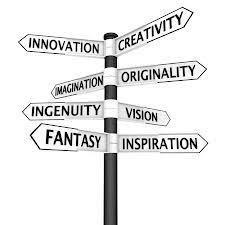
PD James
1 Increase your word power. Words are the raw material of our craft. The greater your vocabulary the more effective your writing. We who write in English are fortunate to have the richest and most versatile language in the world. Respect it.2 Read widely and with discrimination. Bad writing is contagious.3 Don't just plan to write – write. It is only by writing, not dreaming about it, that we develop our own style.4 Write what you need to write, not what is currently popular or what you think will sell.5 Open your mind to new experiences, particularly to the study of other people. Nothing that happens to a writer – however happy, however tragic – is ever wasted.
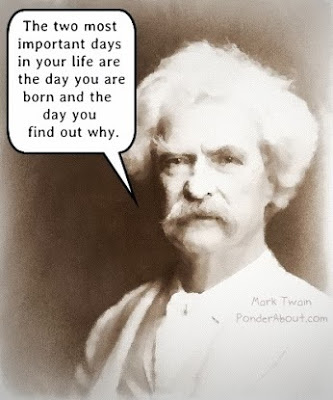
AL Kennedy
1 Have humility. Older/more experienced/more convincing writers may offer rules and varieties of advice. Consider what they say. However, don't automatically give them charge of your brain, or anything else – they might be bitter, twisted, burned-out, manipulative, or just not very like you.2 Have more humility. Remember you don't know the limits of your own abilities. Successful or not, if you keep pushing beyond yourself, you will enrich your own life – and maybe even please a few strangers.3 Defend others. You can, of course, steal stories and attributes from family and friends, fill in filecards after lovemaking and so forth. It might be better to celebrate those you love – and love itself – by writing in such a way that everyone keeps their privacy and dignity intact.4 Defend your work. Organisations, institutions and individuals will often think they know best about your work – especially if they are paying you. When you genuinely believe their decisions would damage your work – walk away. Run away. The money doesn't matter that much.5 Defend yourself. Find out what keeps you happy, motivated and creative.6 Write. No amount of self-inflicted misery, altered states, black pullovers or being publicly obnoxious will ever add up to your being a writer. Writers write. On you go.7 Read. As much as you can. As deeply and widely and nourishingly and irritatingly as you can. And the good things will make you remember them, so you won't need to take notes.8 Be without fear. This is impossible, but let the small fears drive your rewriting and set aside the large ones until they behave – then use them, maybe even write them. Too much fear and all you'll get is silence.9 Remember you love writing. It wouldn't be worth it if you didn't. If the love fades, do what you need to and get it back.10 Remember writing doesn't love you. It doesn't care. Nevertheless, it can behave with remarkable generosity. Speak well of it, encourage others, pass it on.

Clancy's comment: Well, I hope some of these have helped you emerging writers.
I'm ...

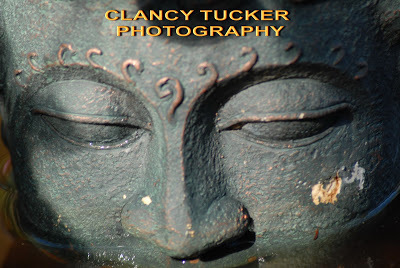
Published on July 20, 2015 04:04
July 19, 2015
20 July 2015 - KATE MIDDLETON
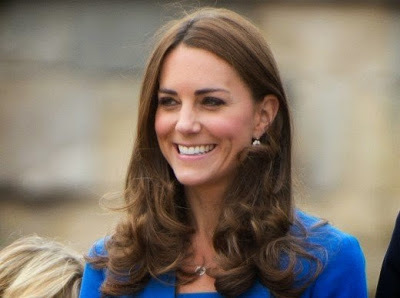
KATE MIDDLETON
G'day folks,
Time to present some royalty. Catherine, Duchess of Cambridge, is the wife of Prince William, Duke of Cambridge. Following his father Charles, Prince of Wales, William is second in line to succeed his grandmother, Queen Elizabeth.
Kate Middleton, Her Royal Highness the Duchess of Cambridge, married Prince William in 2011 at Westminster Abbey.
Synopsis
Kate Middleton was born on January 9, 1982, in Reading, England. On April 29, 2011, she married Prince William at Westminster Abbey in London. Shortly before their wedding, Queen Elizabeth conferred Kate with the title of Catherine, Her Royal Highness the Duchess of Cambridge. After the palace officially announced her pregnancy in December 2012, Middleton gave birth to Prince George, the third in line to the throne, on July 22, 2013, amid an international media frenzy. She gave birth to a daughter, the fourth in line to the throne, on May 2, 2015.

Early Life
Kate Middleton was born Catherine Elizabeth Middleton on January 9, 1982, in Reading, Berkshire, England, to pilot Michael and flight attendant Carole Middleton. Middleton has a younger sister, Philippa ("Pippa") and a younger brother, James.
Kate came from a decidedly working-class stock of coal miners and builders. Her maternal grandmother, Dorothy Goldsmith, became the first member of the family to attempt to improve the family's social and economic status. Dorothy pushed her children to aim high and, as a result, Kate's mother became an airline hostess—at the time, a considerably glamorous job. It was on this job that Carole met dispatcher Michael Middleton. The couple married soon after.
By the time Kate was born, her mother was already looking for new ways to climb the social ladder. In 1987, Kate's mother founded her own mail-order party goods company, with ambitions of sending her children to private schools. The business was a surprise success, eventually making the Middleton family multi-millionaires.
As a result of this new-found income, Kate and her siblings didn't want for much. Kate attended exclusive boarding schools, including St. Andrew's Prep School, Down House, and Marlborough College. But her time in boarding school did not come without its conflicts. Kate left the exclusive Down House all-girls boarding school at the age of 13, due to bullying and taunts from other students there. And on her first day at co-ed Marlborough, some particularly mean-spirited boys began rating incoming students based on attractiveness and personality. They gave Kate a two out of 10. Despite the initial setbacks, however, Kate did well in her studies, passing 11 GCSEs and three A-level exams.
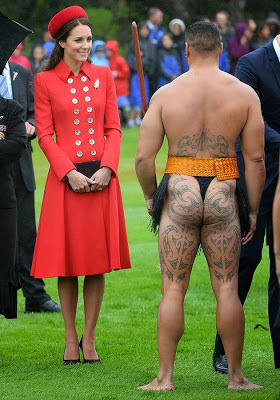
In 2001, Middleton became a student at the University of St Andrews in Fife, Scotland—the first in her family to attend college. While in her first year at the university, Middleton was placed in the dormitory St. Salvators Hall—the same building as Prince William of Wales. Middleton and Prince William shared several classes in their course schedule as well, and soon became friends. But while they often shared breakfast and walked to classes together, the two were not interested in each other romantically at first. Middleton was dating senior Rupert Finch, and William was busy dealing with the press and struggling with his feelings about his new school.
But in 2002, Middleton appeared in an exclusive fashion-show fundraiser wearing a revealing dress. William was also present at the charity event, and became intrigued and interested in Kate in a new way. He attempted to engage her romantically that evening but, still in a relationship with Finch, Middleton spurned the future king's advances.
Royal Romance
By the end of 2002, Middleton's boyfriend had graduated. The couple soon parted ways over issues of distance. Newly single and entering her junior year, Middleton and several friends were invited to share a flat with Prince William. In 2003, Middleton and the prince fell into a natural romance, and began dating.
At first, Middleton's life didn't change much. The couple kept their relationship a secret for several years, mostly due to the prince's extreme distrust of the press. The couple agreed not to hold hands in public, or be seen sitting together at dinner parties. This seemed to throw off the press for the most part, and by June 2003 Kate had graduated with an honors bachelor's degree in art history, without any real disruptions from the press.
But in 2004, Kate was caught by paparazzi while on a royal family ski trip. Her relationship with William became the subject of intense scrutiny and, by 2005, she was a tabloid favorite. In February 2006, it was announced that Middleton would receive her own 24-hour security detail from the Royalty and Diplomatic Protection Department. This led to rumors that Middleton was being groomed for a position of royalty.
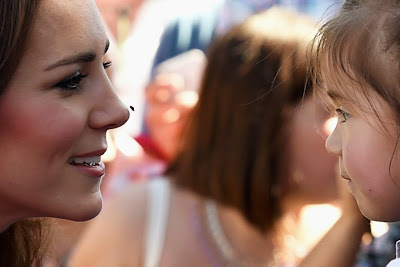
In 2006, Prince William headed off to a military academy. Middleton lost her security detail, and was faced with tending the paparazzi frenzy, alone. As the girlfriend of the prince, finding a job was also difficult; the position had to be considered respectable by the royal family, while also allowing Middleton the flexibility to take off at a moments' notice to be with the prince. In November 2006, Middleton finally found an acceptable position as an assistant accessories buyer with the British clothing chain Jigsaw in London. It was later reported that she left the company in order to study portrait photography.
In April 2007, Middleton and Prince William publicly split. Allegedly pressured by the royal family to either propose or let Middleton move on with her life, William apparently broke off the couple's five-year relationship over the phone. Media reports said otherwise, however, as Middleton was spotted at several royal events accompanied by the prince only a few months later. Other rumors indicated that the couple were living together. Both parties denied the rumors.
In 2010, it was revealed that Middleton had been working on plans to start a new bakery business with her brother, James, who ran The Cake Kit Company. The business had the goal of encouraging kids to cook and making it easier to bake party cakes.
Marriage to Prince William
On November 16, 2010, Middleton and Prince William announced their engagement. The prince proposed during a vacation to Kenya, and he presented Kate with his mother's engagement ring. The couple then announced plans to live in North Wales, where Prince William is stationed with the Royal Air Force, after their marriage.
On April 29, 2011, the couple married at Westminster Abbey in London. Kate wore a dress designed by Sarah Burton—a fact that remained a closely guarded secret until the big day. Shortly before the wedding, Queen Elizabeth conferred Kate with the title of Catherine, Her Royal Highness the Duchess of Cambridge Middleton made headlines in September 2012, when photos of her sunbathing topless in southern France were published by a French magazine, Closer. Soon after, the photos were reproduced in publications in Ireland and Italy. As soon as news broke about the photos in Closer, the British royal family became involved in a legal battle to attain the rights to the photos, in hopes of preventing other publications from printing them. According to the Los Angeles Times, the photos weren't picked up by any news organizations in Britain.
Four days after Closer published the photos, on September 18, 2012, the royal family won their copyrights in court: A judge ordered the French magazine to hand over the photos within 24 hours of the court's decision, according to the L.A. Times. Closer could face daily fines of $13,000, as well as fines for any reprints of the photos, if it fails to meet the 24-hour timeline, the Timescontinued.

Royal Pregnancy
On December 3, 2012, after almost a year of baby rumours and much speculation, St. James Palace officially announced that Kate Middleton was pregnant. On the same day of the announcement, Middleton, with Prince William by her side, was hospitalized at King Edward VII hospital in London with acute morning sickness.
"Their Royal Highnesses The Duke and Duchess of Cambridge are very pleased to announce that The Duchess of Cambridge is expecting a baby," the official statement confirmed the pregnancy. "The Queen, The Duke of Edinburgh, The Prince of Wales, The Duchess of Cornwall and Prince Harry and members of both families are delighted with the news."
In September 2014, it was announced that Kate Middleton was pregnant with the couple's second child.
Royal Births
Anticipating the arrival of Middleton and Prince William's first born, international media outlets camped out in front of St. Mary's Hospital in Paddington at the beginning of July 2013. St. Mary's was the same hospital where Princess Diana gave birth to Prince William and later Prince Harry.
On July 22, 2013, the palace announced Middleton had given birth to a baby boy, weighing in at 8 pounds and 6 ounces, at 4:24 p.m. local time. Prince George Alexander Louis of Cambridge is third in line to British throne, following Prince Charles and Prince William.
On May 2, 2015, she gave birth to a daughter, Princess Charlotte Elizabeth Diana, weighing 8 pounds, 3 ounces, at 8:34 a.m. local time at St Mary's Hospital. The baby is the Queen's fifth great-grandchild and the fourth in line to the throne after her brother Prince George.

Clancy's comment: Absolutely charming.
I'm ...


Published on July 19, 2015 04:58
July 18, 2015
19 July 2015 - HISTORY OF SKY SCRAPERS
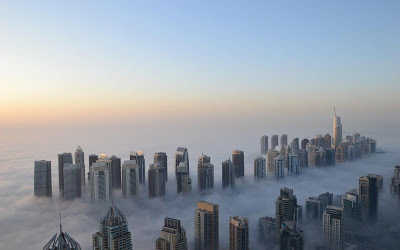
HISTORY OF SKY SCRAPERS
G'day folks,
No doubt you have all been in a sky scraper. How did you feel? I was terrified, but excited, when I first visited the Empire State Building.
The desire to build big is nothing new. Big buildings have been used to show off power and wealth; to honor leaders or religious beliefs; to stretch the limits of what's possible; and even as simple competition among owners, families, architects, and builders. Some of the most dramatic buildings of the past include the pyramids in Egypt, the skinny towers stretching towards the sky in Italian hill towns, and the gothic cathedrals of France. While these types of buildings may look very different from each other, they all have one thing in common. They were built with masonry or stone walls supporting most of the weight (so-called load-bearing walls), including that of the floors, the people, and everything the rooms contained. Because of this, the height of these buildings was limited by how massive and heavy they had to be at the base.
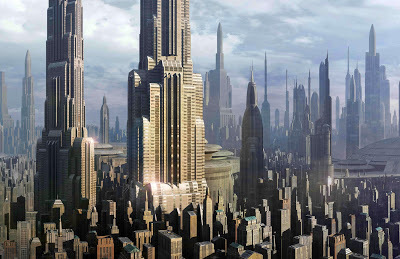
Removing the Obstacles
Two developments in the 19th century paved the way for a whole new type of building: the skyscraper. The first was the development of a safe elevator. Primitive elevators of various designs had been used for centuries, and starting in the mid 19th century, steam-operated elevators were used to move materials in factories, mines, and warehouses. But these elevators were not considered safe for people; if the cable broke, they would plummet to the bottom of the elevator shaft. Then in 1853, an American inventor named Elisha Graves Otis developed a safety device that kept elevators from falling if a cable should break. This new development had an enormous impact on public confidence. And later in the century, the switch to an electric motor made the elevator a practical solution to the problem of getting up and down tall buildings.
The second development took place in Chicago. In 1871, Chicago suffered a devastating fire. In the years that followed, however, instead of recovering slowly, the city experienced explosive growth, and it quickly began to strain against its natural boundaries. By the 1880s, the available land for new buildings in this area could not keep up with demand; the only alternative was to build up. But in order to achieve the desired height, construction techniques had to change. A new method of building was developed that used a grid of steel beams and columns that were strong enough to support any stresses or forces a building might experience, including both the weight of the floor and the building contents, as well as the force of wind or even, in some areas, earthquakes. And with this new building method, the skyscraper was born and the race for the tallest buildingbegan.
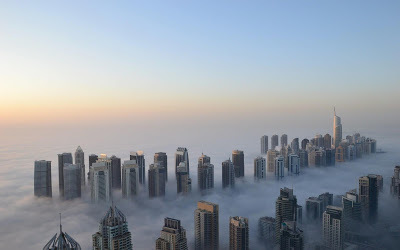
Modern Materials
Since the birth of the skyscraper, builders and engineers have continuously looked for ways to improve building methods and materials, in order to make structures stronger, taller, and lighter. Skyscrapers are built to last, so they must be made of materials that are strong; durable; resistant to the sun, wind, rain, frost, and snow; and affordable. Concrete is one of the most common materials, beyond the steel supports, because it is enormously versatile. Its composition can be changed depending on the needs of the building. It can be reinforced to make it stiffer and stronger by setting steel mesh or bars into the concrete. And additives can make it set or harden faster or slower depending on the needs of the design.
Another very important material is glass. Because the steel skeleton now supports the main loads of the building, the outer skin only serves to keep the weather out and let light in, the more light the better. So glass walls became very popular beginning after World War II, because they are weatherproof while providing ample natural light, and also because they are so much lighter-and cheaper-than masonry or concrete.
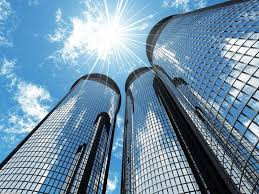
The Forces of Nature
But as buildings became taller and lighter, particularly the modern glass boxes that are so popular, skyscrapers began having trouble with the wind and they began to sway, some more than two feet in any direction! Engineers came up with new solutions for this problem, first installing diagonally braced steel trussesbetween central elevator shafts to create a stronger core, and then moving most of the beams and columns to the outside edge of the walls in order to make a stiff tube. A more unusual solution was devised to control sway in the 1970s called a tuned mass damper. This is a giant concrete block or weight, mounted with springs and shock absorbers on a lubricated plate, designed like a pendulum to move in one direction when a computer senses the structure has begun to move in the other, in order to counterbalance the motion.
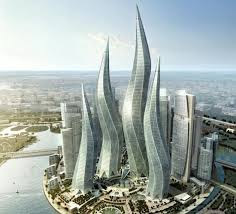
Building Badly Of course, with new technological developments, problems can occur. One dramatic and very visible example was the John Hancock Tower in Boston, now considered the city's most spectacular building. The structure is a tower of mirrored glass. But almost from the beginning, the glass panes failed. The problem started during a winter gale in January 1973 while the tower was still under construction, when huge panels of glass, each weighing 500 pounds, shattered and fell to the street below.
The streets and sidewalks were roped off as engineers tried to figure out what was going wrong. By April at least 65 panels had fallen and been replaced by plywood. Theories and rumors persisted, including that the tower was swaying too much, causing the windows to pop out, or that the tower's foundation was settling so significantly that it broke the windows. The truth was that the material itself failed. The window units had been manufactured using a fairly new process and the design was fatally flawed. Ultimately, all 10,344 windows had to be replaced and the building has been safe ever since.

The Race for the Sky
In the early 20th century, corporations built skyscrapers for the promotional value to increase name recognition. Among the early skyscrapers in Manhattan were the Metropolitan Life Insurance Tower (700 feet, 50 stories), the Woolworth Building (the world's tallest from 1913-1930 at 792 feet, 60 stories), the Bank of Manhattan (927 feet, 71 stories), and the heavily decorated Chrysler Building(briefly the world's tallest in 1930 at 1046 feet, 77 stories). The Chrysler Building soon lost its crown to the Empire State Building, built during the Depression by a real estate developer, which reached a stunning 1,250 feet and 102 stories. The Empire State Building would reign supreme among skyscrapers for 41 years until 1972, when it was surpassed by the World Trade Center(1,368 feet, 110 stories). Two years later, New York City lost the distinction of housing the tallest building when the Sears Tower was constructed in Chicago (1450 feet, 110 stories). And twenty-four years after that, for the first time the tallest skyscraper was no longer in the United States at all, but in Kuala Lumpur, Malaysia, where the Petronas Towerswere built in 1998 (1483 feet, 88 stories).
Taipei 101, completed in Taiwan in 2004, which tops out at 1,670 feet and 101 stories, held the title as the tallest building in world until January 2010, when the Burj Khalifa (formerly called the Burj Dubai), in Dubai, United Arab Emirates, became the world's tallest building at 2,716 feet (828 meters) and 160 stories. The Burj Khalifa contains the world's fastest elevators, 20.7 acres of glass, and is expected to use about 250,000 gallons of water per day.

Clancy's comment: Maybe they are a necessary evil, but I still shudder at the height of some of these structures.
I'm ...


Published on July 18, 2015 03:40
July 17, 2015
18 July 2015 - MUG SHOTS

MUG SHOTSG'day folks,
Ever had a mug shot? Mm ... Check these out ....





















Clancy's comment: A couple of these would suit me fine.
I'm ...


Published on July 17, 2015 03:08
July 16, 2015
17 July 2015 - OSKAR SCHINDLER
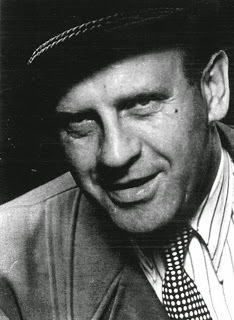
OSKAR SCHINDLER
G'day folks,
No doubt you have heard of this man. Oskar Schindler was a German industrialist during World War II who sheltered approximately 1,100 Jews from the Nazis by employing them in his factories.
Synopsis
Oskar Schindler was born into a German Catholic family on April 28, 1908. After attending trade schools, he worked for his father’s farm machinery company. He worked for German intelligence and later joined the Nazi Party. An opportunist businessman with a taste for the finer things in life, he seemed an unlikely candidate to become a wartime hero. During the war, however, he operated a factory that employed more than 1,000 Polish Jews, saving them from concentration camps and extermination. In 1993 his story was made into the Steven Spielberg feature film Schindler's List.
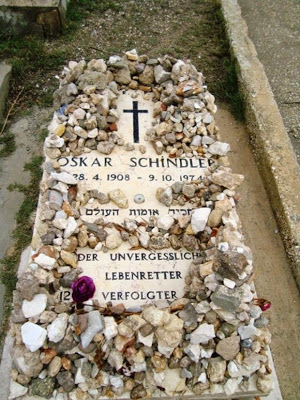
Early Years
Oskar Schindler was born April 28, 1908, in the city of Svitavy [Zwittau], in the Sudetenland, now part of the Czech Republic. The eldest of two children, Oskar’s father, Hans Schindler, was a farm-equipment manufacturer, his mother, Louisa, was a homemaker. Oscar and his sister, Elfriede, attended a German-language school where he was popular, though not an exceptional student. Forgoing the opportunity to attend college, he went to trade school instead, taking courses in several areas.
Oskar Schindler left school in 1924, taking odd jobs and trying to find a direction in life. In 1928, he met and married Emilie Pelzl and soon after was called into military service. Afterward, he worked for his father’s company until the business failed in the economic depression of the 1930s. When not working, Schindler excelled at drinking and philandering, a lifestyle he would maintain throughout much of his life.
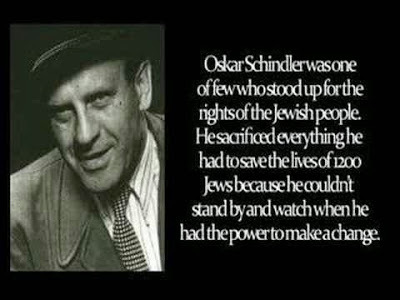
From Spy to Black Market Entrepreneur In the 1930s, the political landscape of Europe changed dramatically with the rise Adolf Hitler and the German Nazi Party. Sensing the shift in political momentum, Schindler joined a local pro-Nazi organization and began collecting intelligence for the German military. He was arrested by Czech authorities in 1938, charged with spying and sentenced to death but was released shortly thereafter, when Germany annexed the Sudetenland. Schindler would take advantage of this second chance.
In September 1939, Germany invaded Poland, starting World War II. Schindler left his wife and traveled to Krakow, hoping to profit from the impending war. Looking for business opportunities, he quickly became involved in the black market. By October, Schindler used his charm and doled out “gifts of gratitude” (contraband goods) to bribe high-ranking German officers. Wanting to expand his business interests, Schindler obtained a former Jewish enamelware factory to produce goods for the German military.

The Enamelware Factory
Oskar Schindler renamed the factory Deutsche Emaillewaren-Fabrik (German Enamelware Factory) and started production with a small staff. Possessing a certain panache for business and engaging in influence peddling, Schindler secured numerous German army contracts for kitchenware. He soon met Itzhak Stern, a Jewish accountant, who connected Schindler with Krakow’s Jewish community to staff the factory.
Starting out with 45 employees, the company grew to more than 1,700 at its peak in 1944. Initially, Schindler hired Jewish workers because they were a less expensive Polish workforce. But as Nazi atrocities against the Jewish community increased, Schindler’s attitude changed. With the help of Stern, he found reasons to hire more Jewish workers, regardless of their abilities. By 1942, nearly half of his employees were Jewish and were known as Schindlerjuden (Schindler Jews). When the Nazis began to relocate Krakow’s Jews to labor camps, Itzhak Stern and several hundred other employees were among them. Schindler raced to the train station and confronted an SS officer, arguing that his workers were essential to the war effort. After several tense minutes of dropping names and making veiled threats, Schindler was able to free his workers and escort them back to the factory.
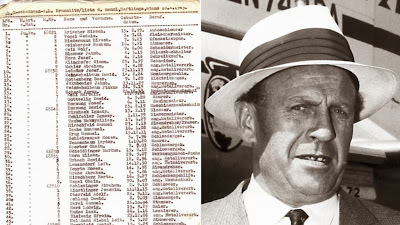
Schindler’s Life-Saving List In early 1943, the Nazis implemented the liquidation of the Krakow Jewish population and opened up the Plaszow work camp, run by the notoriously sadistic commandant, Amon Göth. Schindler cultivated a relationship with Göth, and whenever any of his workers were threatened with deportation to a concentration camp or execution, Schindler managed to provide a black-market gift or bribe to save their lives.
In 1944, Plaszow transitioned from a labor camp to a concentration camp and all Jews were to be sent to the death camp at Auschwitz. Schindler requested Göth allow him to relocate his factory to Brnĕnec, in the Sudetenland, and produce war goods. He was told to draw up a list of workers he wanted to take with him. With Stern’s help, Schindler created a list of 1,100 Jewish names he deemed “essential” for the new factory. Permission was granted and the factory was moved.
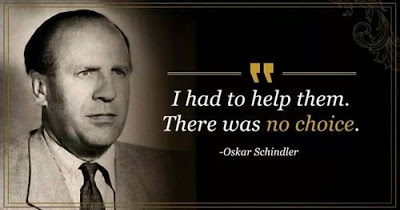
Not wanting to contribute to the German war effort, Schindler ordered his workers to purposefully make defective products that would fail inspection. The employees spent the remaining months of the war in the factory.
 Clancy's comment: An interesting man during awful times. Well done, Oskar.I'm ...
Clancy's comment: An interesting man during awful times. Well done, Oskar.I'm ...


Published on July 16, 2015 04:23
July 15, 2015
16 July 2015 - QUOTES FROM AUTHORS

QUOTES FROM AUTHORS
G'day folks,
Time for some more quotes from famous authors.
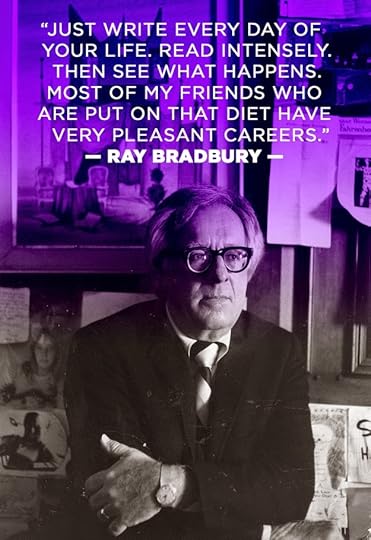
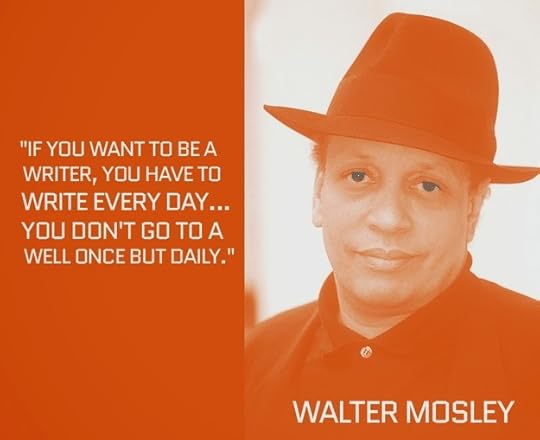

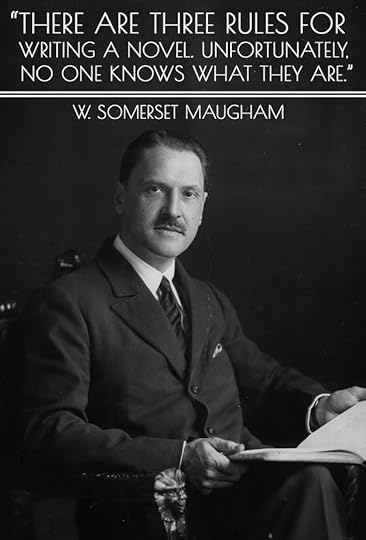
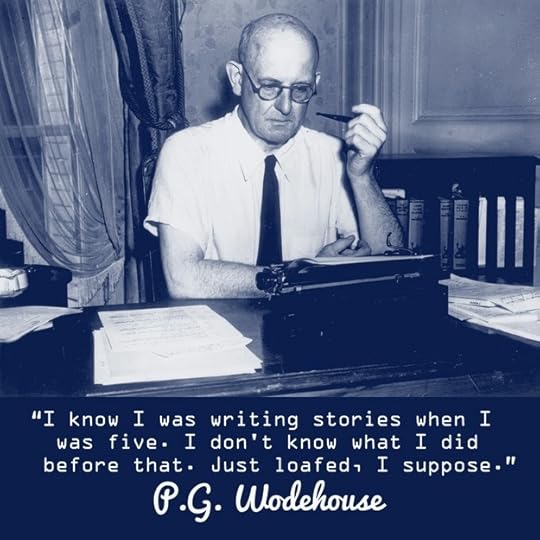

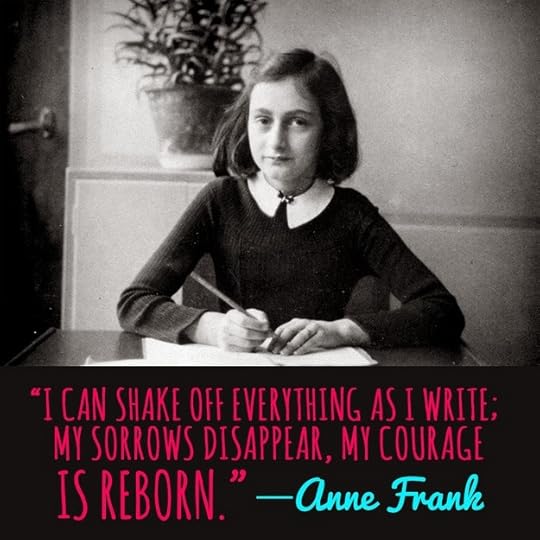
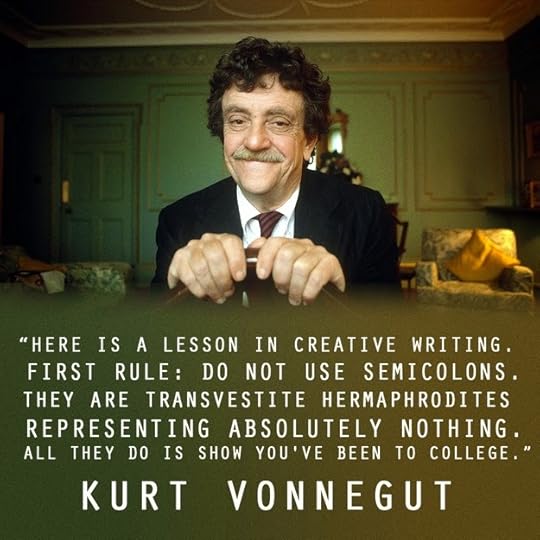
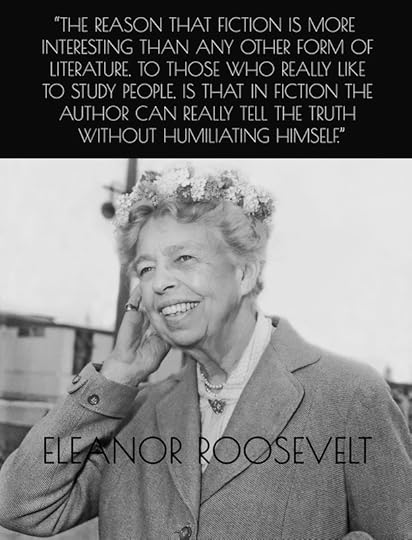





Clancy's comment: There ya go, folks. Hope these have fired you up ... Or made you smile.
I'm ...


Published on July 15, 2015 04:59
July 14, 2015
15 July 2015 - AMAL RAMZI CLOONEY
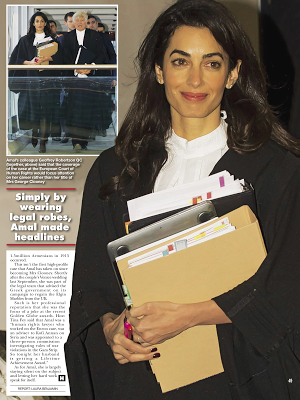
AMAL RAMZI CLOONEY
G'day folks,
Welcome to some background information on a very talented lawyer, who just happens to be married to George Clooney. George who?
Amal Ramzi Clooney, born Amal Ramzi Alamuddin, is a Lebanese-British barrister, human rights activist and philanthropist. A graduate of Oxford University and New York University School of Law, her long and accomplished career in the fields of international law and human rights have won her international acclaim. Her high-profile clients have included several nation-states, including the country of Armenia in its fight for recognition of the Armenian Genocide by the Turkish government. Amal Alamuddin became engaged to and married American actor George Clooney in 2014, instantly becoming a household name in popular culture. Years before this, though, she was already well-known and respected in legal circles for consistently representing her clients with skill and success. The scope of her work ranges from tackling social justice and human rights issues to representing several multinational corporations in their negotiations and court actions regarding government regulation. As of 2015, she is a barrister—one type of legal representative in British courts—at London-based Doughty Street Chambers.

Childhood & Early Life
Born on February 3, 1978, in Beirut, Lebanon, right in the middle of the deadly Lebanese Civil War, Alamuddin moved to London with her family at age 2. Her father, Ramzi Alamuddin, is of Lebanese-Druze descent, and worked as a University professor and as the owner of a travel company. Her mother, Bariaa Alamuddin, is a Sunni Muslim and an internationally recognized journalist. Amal was raised in the Sunni Muslim faith. She has three siblings: her sister, Tala, as well as two half-brothers via her father's previous marriage, Samer and Ziad. Her pre-college education came at Dr. Challoner's High School.
Career
Amal attended Oxford University on an Exhibition Scholarship. She graduated from St. Hugh's College at Oxford with a Bachelor of Arts in Jurisprudence in 2000. She attended New York University School of Law beginning in 2001 and graduated with a Masters in Laws degree. During her time at NYU, Alamuddin worked clerkships in both the International Court of Justice and United States Court of Appeals.She carried out one of her clerkships in the offices of Sonia Sotomayor, who is today a U.S. Supreme Court Justice. Amal worked for 3 years for Sullivan & Cromwell in New York City on cases representing Enron and Arthur Andersen, among others. She moved to London in 2010 to begin work as a barrister at Doughty Street Chambers. Different than a lawyer in U.S. courts, a barrister can speak in court on behalf of clients but does not seek out or work with them directly. That role is held by a solicitor, another type of legal representative. From 2010 to the present day, Amal has had a strong but controversial presence in international court proceedings, having represented former Libyan intelligence chief Abdullah al Senussi in a war crimes trial at the Hague. She has served as a special adviser to former U.N. security general Kofi Anaan as well as on several UN human rights investigation and conflict resolution panels. Her representation of WikiLeaks founder Julian Assange in his fight against extradition brought her strong recognition in the international law community, even as she had been plagued by controversy earlier in her career. Her recent work as of 2015 has been in the field of advocating for the protection of women against physical and sexual violence in conflict zones.
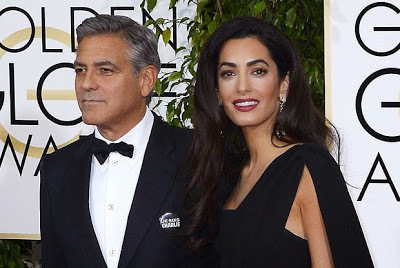
Major Works
Amal has co-authored the book "The Law and Practice of the Special Tribunal for Lebanon", published in 2013 by the Oxford University Press. She has written chapters for several high-profile works on international law, plus countless advisement papers for judges, politicians and corporations from many nations.
Awards & Achievements
While a student at St. Hugh's College of Oxford, Alamuddin received the prestigious Shrigley Award given for excellence in law studies. At NYU, she was presented with the Jack J. Katz Memorial Award, given to the student displaying the highest level of proficiency in the field of entertainment law. Amal was appointed special counsel to a United Nations inquiry on counter-terrorism and human rights regarding the use of drones in wartime. In 2014, she was offered another position at the UN, this time on a panel investigating war crimes in Gaza. She declined, citing her commitment to her current caseload.
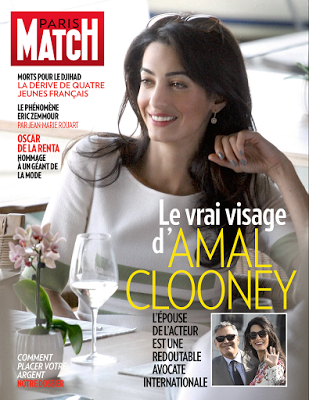
Personal Life & Legacy
Amal's engagement and subsequent marriage to George Clooney rocked the entertainment media with the news that Clooney, a notorious bachelor, would be settling down. The couple's official wedding ceremony took place on September 27, 2014 at Venice, Italy's city hall, though they held a lavish ceremony attended by many celebrities a few days earlier in Venice. When not traveling, the Clooneys live in London on a large estate occupying an island along the River Thames. The Clooneys' considerable combined wealth has allowed them the ability to take part in philanthropy work. The issues they share in common include protecting human rights during times of international conflict.
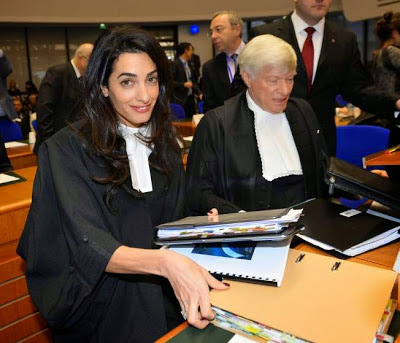 Amal with a famous Aussie lawyer.
Amal with a famous Aussie lawyer.Net Worth
Amal Clooney's personal net worth is unknown, though entertainment news website Zseek estimates it to be around $2 million. Her husband's net worth is reportedly more than $180 million, though the couple do not make public their financial arrangements since their 2014 wedding.
Trivia
In 2015, an entertainment reporter asked Amal Clooney what designer label she would be wearing to an upcoming event. Her response of "Ede & Ravenscroft" - the centuries-old maker of official robes and garments for British judges and legal professionals - went viral, and spoke volumes about her stance of being much more than just a famous actor's wife.

Clancy's comment: Great talent, eh? Stunning woman. How lucky is George?
I'm ...

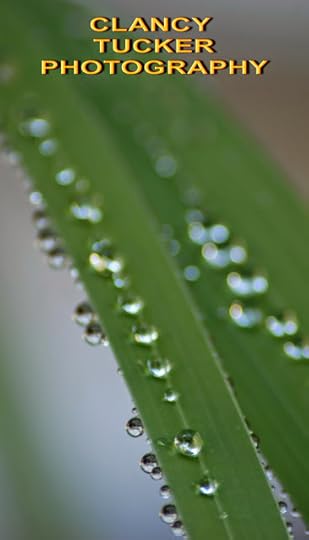
Published on July 14, 2015 04:06
July 13, 2015
14 July 2015 - SARCASTIC QUIPS

SARCASTIC QUIPS
G'day folks,
Nothing more needs to be said about this post.










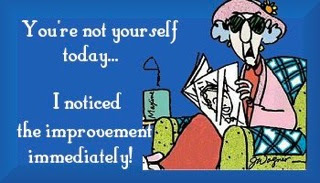









Clancy's comment: Mm ... I doubt some folks would need to read these snippy comments. They have heaps of their own.
I'm ...


Published on July 13, 2015 05:17



